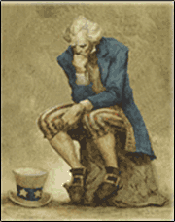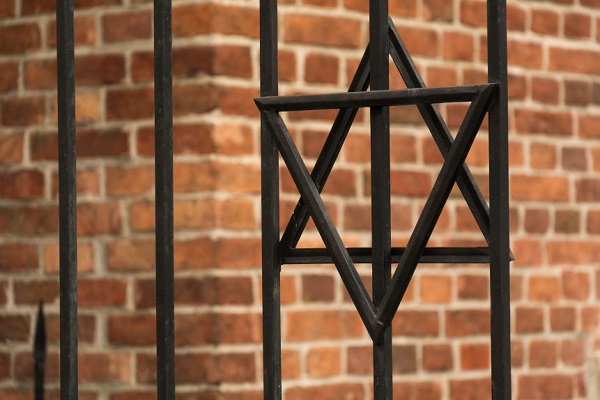
–>
September 4, 2022
It is still an open question whether France has completely confessed its responsibility for its sins of the past in participating in the Holocaust, and whether the fate of Jews in France has been fully told. It is clear that French presidents since Jacques Chirac on July 16, 1965 acknowledged the role of the French state and the police in the Holocaust in assisting the criminal insanity of the Nazi occupation in deporting Jews to their death. “These black hours will stain our history forever.” President Emmanuel Macron on July 16, 2017, asserted that it was indeed France that organized the roundups, the deportation to death camps of Jews.
‘); googletag.cmd.push(function () { googletag.display(‘div-gpt-ad-1609268089992-0’); }); }
It is also clear that the French highest court, the Council of State, on February 16, 2009, formally recognized the role of France in deporting Jews, 76,000, to their death, and rejection of values and principles of the human person. In stark terms, the Court noted that the role of the French authorities was not forced by Nazi occupation.
Yet, though there is general consensus of French responsibility, new light has been shed on events of Vel d’Hiv, the winter Velodrome of Paris, the indoor sporting arena, the site of the round-up of Jews on July 16–17, 1942, leading to the largest French deportation of Jews to their death.
The ground for this action had been prepared. On May 29, the Nazis issued a decree that Jews in the zone of occupied France would wear a yellow star. The star was already in place in Poland in 1939 and in Alsace and Bohemia. A series of roundups took place in spring and summer 1942. They were orchestrated by René Bousquet, head of the French Vichy police, May 1942 to December 1943, an efficient, ambitious administrator at age 33, and Louis Darquier de Pellepoix, the commissioner for Jewish affairs in the Vichy regime, with the consent of political leaders. Pierre Laval, prime minister, even suggested, for “humanitarian” reasons, that children be arrested with their parents, an objective not earlier contemplated. Bousquet sent telegrams proposing increased roundups that should include non-French Jews beyond Paris, throughout the country.
‘); googletag.cmd.push(function () { googletag.display(‘div-gpt-ad-1609270365559-0’); }); }
All foreign or stateless Jews who had entered France after January 1, 1936 were targeted for round-up: most had come from Belgium and the German states of Baden and Palatinate in 1940.
Vel d’Hiv was not the first round-up of Jews, but it is the most dramatic and well known. In all, 13,152 were arrested, of whom 31% were children. Facilities were appalling: overcrowding, no arrangements for food or water, no available toilets. After five days, the victims in Vel d’Hiv were transferred to transit camps, Drancy, Pithiviers, and Beaune-la-Rolande, where they were guarded by French police until deported to Auschwitz. The event was a wholly French operation.
Vel d’Hiv is seared in the French collective memory. It is the symbol of the responsibility of the French Vichy regime for participation in the Holocaust. But it was not the end of that participation. René Bousquet initiated negotiations with Nazi authorities over more arrests. From his office, circulars were sent to prefectures running police forces in the non-occupied, Vichy, zone for further action. One of these actions, almost unknown or forgotten by French society, is the event, six weeks after Vel d’Hiv on August 26, 1942 when the Vichy government decided on a “rafle,” round-up, of foreign Jews. The director of the Paris municipal police sent expectations for the number to be rounded up. The original goal was for the French police to round up 28,000 foreign and stateless Jews in the Paris area. In fact, police rounded up more than 6,500, including hundreds of children, who were arrested and immediately transferred to Drancy and then to Auschwitz.
The action, mainly organized by Bousquet, was undertaken entirely by French police and authorities in a city, Lyon, where they were few Nazis. It was a French initiative from start to finish. The always eager Bousquet called for more arrests, pointing out the gap between the number of foreign Israelites registered and the number attested.
In judging the behavior of French society, two relevant comments may be made: the consequences of the actions of the police chief, Bousquet, and the surprising lack of knowledge of the continuation of the round-ups in Lyon and elsewhere inherent in the general problem of denial, repression, or suppression of unpleasant information.
It is generally agreed that many in France, as in Germany, were insufficiently punished for their infamous actions in carrying out the Holocaust. Bousquet, because of official help including some from President Francois Mitterrand, was one of them. In 1949, he was acquitted of compromising “the interests of the national defense” but found guilty of five years of indignité nationale, but this was immediately lifted, and he then had a prosperous civil career. In 1989, the Nazi-hunter Serge Klarsfeld charged him with crimes against humanity, for deportation of children to their death. He was committed to trial, but before a court hearing could take place, on June 8, 1993, he was murdered by a mental patient.
‘); googletag.cmd.push(function () { googletag.display(‘div-gpt-ad-1609268078422-0’); }); } if (publir_show_ads) { document.write(“
The conclusion is clear. France is the only country in Europe where the national government, police, bus drivers, acted, without coercion by German soldiers and militia, to arrest Jews.
It is true that documents dealing with French police activity have been lost or misplaced, but sufficient information is available in statements by police and concierges to appreciate the reality.
The surprise therefore is the suppression or repression of information about the continuing “rafles.” It raises the problem: to what extent do people develop defense mechanisms to deal with negative and unpleasant past?
Psychologists differ over concepts like suppression, consciously suppressing one’s feelings and thoughts, and repression, not acknowledging or denying the existence of the historical past. The revelations of the Holocaust may cause amnesia.
In what is a controversial concept, Sigmund Freud developed the concept of “repression,” that thoughts, memories, or feelings may be too painful for an individual, so the individual unconsciously pushes the information out of consciousness. This concept seemed to explain the reluctance of Holocaust survivors, eager to start a new life, for a time in the years after their survival, to tell the true story of what happened to them. They did not want to trigger unpleasant memories. As the Israeli historian Anita Shapira has suggested, the first native generation in Israel tended to ignore or erase the memory of the Holocaust. For a time, it was suppressed in the Israeli national consciousness, never at the center of the public discourse.
Can the surprising French lack of knowledge of the continuation of “rafles” after Vel d’Hiv be seen in the same way?

Image via Libreshot.
<!– if(page_width_onload <= 479) { document.write("
“); googletag.cmd.push(function() { googletag.display(‘div-gpt-ad-1345489840937-4’); }); } –> If you experience technical problems, please write to [email protected]
FOLLOW US ON
<!–
–>
<!– _qoptions={ qacct:”p-9bKF-NgTuSFM6″ }; ![]() –> <!—-> <!– var addthis_share = { email_template: “new_template” } –>
–> <!—-> <!– var addthis_share = { email_template: “new_template” } –>





